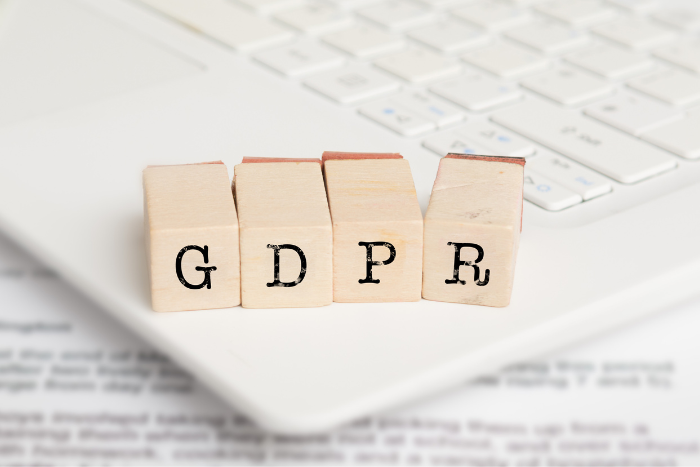Your e-commerce compliance checklist
This month, Laura Unite of Jamieson Law discusses the importance of protecting your e-commerce presence through website compliance and good legal practice.
Selling goods online is now easier than it has ever been, and it is future proof – it’s therefore no wonder that many start-ups have an e-commerce option. With great opportunity comes great responsibility, and there are several things you need to think about to be protected and legally compliant when selling goods online. This brings me onto this month’s article: my checklist setting out the must-haves for your e-commerce presence.
Registration with the ICO
As a starting point, all businesses that collect personal data from their customers must register with the Information Commissioner’s Office (ICO), UK’s independent authority on data protection, unless they are exempt. We hear on a daily basis from people who tell us they’re exempt, but they’re mistaken 99.9% of the time. Personal data is any information which allows a person to be identified or identifiable. For e-commerce businesses, this will be names, email addresses, phone numbers, and home/delivery addresses.
The annual registration fee is between £40 and £60 a year and if you set up a direct debit you receive a £5 reduction. For more information, please visit ico.org.uk/for-organisations/data-protection-fee/.
Website compliance
Having a website is one thing but having a legally compliant website is another. Be sure to check out one of my previous articles, available here, on the three things you need to include on your website: terms of use, a privacy and cookies policy, and a cookies consent banner.
Terms and Conditions
By this, I’m talking about a robust set of terms and conditions covering all aspects of your e-commerce business.
These terms give you the chance to tell your customers all about you, about your shop and about the goods you’re selling. The customer should be able to read them and know what they should expect when they buy goods from you. Just to set the record straight and debunk a popular myth: your terms don’t need to be a boring legal contract that no one, except the Jamieson Law team, ever reads. If you’re looking to engage your customers, you can write your terms in the way that you would talk to your customers and make it enjoyable to read.
So, I’ve covered how it can be written – next step is what your terms should contain.
You should give your company details, registered office, and VAT registration number (if you’re VAT registered).
After this, your terms should then be a step by step guide on the process that they buy goods from you. You should explain that the sale is complete when the customer has submitted the order to you via your online shop, paid in full and you have sent them an order confirmation.
It will be important to add a few caveats to your terms. Examples are:
• The images you display on your website are for illustrative purposes only and it is possible that the actual goods may vary slightly to the images online. Reasons for this might be the device the customer uses to visit your website.
• You can’t guarantee that stock levels are always accurate.
• You use your reasonable efforts to ensure the prices on your website are correct, but mistakes do happen. If you spot an error in price when you review their order, you can change the price to the correct amount. It would then be up to the customer to request a refund or accept the new price.
• That your cart is run by a third party, such as ThriveCart or Stripe, and so customers should view their terms and privacy policy before making a payment.
• While you can give an indication of likely dispatch and delivery dates, these can be subject to change. Be sure to include the words: “Time of delivery shall not be of the essence” – this is a fancy way of saying that any delays to delivery doesn’t mean you have breached your contract with them.
As an e-commerce business, you need to be completely aware of consumer rights, as chances are your customer is a fan of Martin Lewis and you need to be prepared.
The first key thing to note is that the goods you sell must be as described on the website, fit for the purpose they are intended, and of satisfactory quality. If the customer has issues with any of these three requirements, they can request that you replace or refund the goods. You should give the contact details of the person they should speak to if the customer isn’t happy with the goods they have received.
Under the Consumer Contracts Regulations, your e-commerce customers have 14 days from the date they receive the goods to request a refund if they change their mind. They then have 14 days to return the goods to you. Your terms should explain your return process, and how long it will take to refund them their money.
There are exceptions to this cooling off period. If the customer has bought underwear or body piercing jewellery (such as earrings), then for hygiene purposes these cannot be returned for a refund. You should state in your terms that all sales of these goods are final.
It is also important that you clearly state in the terms that all sales are final where the goods purchased are bespoke, made to order or specifically ordered in for that customer from your supplier. The customer doesn’t have a statutory right to a refund, but you can offer them a credit note or exchange if you want to.
Contact Us
At Jamieson Law, we pride ourselves on helping e-commerce businesses understand their legal obligations and trying to make everything less daunting. This includes drafting website documents, fixed fee contract reviews and contract drafting services.
If you feel like you could benefit from some one-to-one advice, please take advantage of our free 15-minute legal advice calls. These are not sales calls; just our way of giving back to the business community. You can book a slot here.












